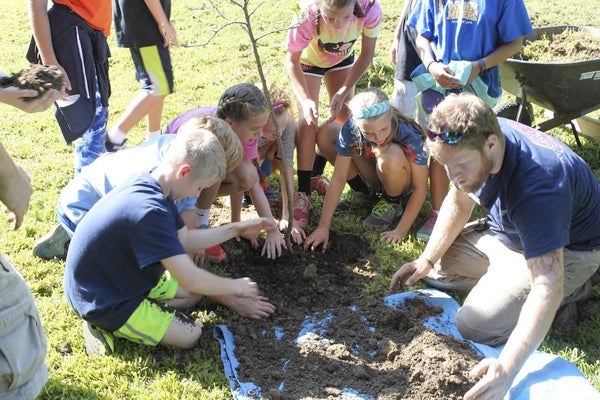Making sure students get their ‘vitamin green’
Published 12:00 am Thursday, January 14, 2016

- Salisbury Academy middle school students plant a tree during an overnight retreat to Camp Kanuga earlier this year. Submitted photo
In today’s learning landscape, where children are placed before a screen for an average of 4.5 hours each day and 30 percent of students spend 15 minutes or less outside, children face a range of challenges. Common struggles include sustained concentration and recall, as well as issues in cultivating creativity. Yet amid these frustrations for students and their teachers lies good news, and an answer that is literally on our doorsteps. The answer is vitamin G.
At a recent “The Whole Child in Nature” conference at Raleigh’s North Carolina Museum of Art, Salisbury Academy teachers Mariana Sanchez and Kim Petty enhanced their understanding of the benefits of outdoor learning and developed further outdoor learning experiences for their students. Experts at the conference shared insights into the importance of outdoor curriculum for students and the treatment of nature deficit disorder through play-based outdoor learning. One of the greatest takeaways from outdoor play, Sanchez shares, is the development of executive function, or the faculties for reasoning, working memory and cognitive flexibility, along with focus, self-control and persistence. Outdoor settings with sticks, rocks, and other loose parts promote executive function development and provide settings for socio-dramatic play – the most beneficial form of play –in which students assign and coordinate roles, for example in playing “house.”
“There are significant long-term benefits in terms of student growth and development,” said Petty, explaining outdoor learning’s proven benefits of increased academic success, higher creativity, physical health, fine and gross motor development, and a reduction in stress and ADHD symptoms. “Nature allows kids to be mindful, in the moment, and that helps decrease their anxiety.”
Playgrounds today are low-utility, with only so many things that a child can do with them, Petty says. Nature, on the other hand, is always changing, and provides an opportunity for students to learn to assess and manage risk while fostering curiosity and creativity. Just as outdoor learning requires a shift from the traditional school playground, the role of the teacher evolves in outdoor play-based learning as well.
“The role of the teacher is to be present but not to take over, to converse with students and help them think things through and problem solve,” Sanchez said.
Fostering independent learning teaches children how to learn, a life skill that is especially critical in today’s competitive education setting where children are expected to be reading in Kindergarten. “I think that is what makes Salisbury Academy so unique: We appreciate every child’s developmental stages and foster their growth,” said Sanchez. “Letting them play – with the play often occurring in an outdoor setting – allows their young brains to develop.”
Giving students their vitamin green is already a key component of Salisbury Academy’s curriculum and philosophy. Among other outdoor learning opportunities, students tend to two school gardens, paint outdoors “en plein air,” attend camp retreats and enjoy close partnerships with Two Pigs Farm and Catawba College’s Center for the Environment. Outdoor learning ties into core academic subjects as well, for example when Kim Petty teaches Joyce Kilmer to her third-graders. Students take a reflective walk up to a tree on the kindergarten campus, where they read Kilmer’s “Trees” poem.
The Whole Child in Nature conference provided new insights for the academy’s outdoor learning curriculum, and ties directly into Salisbury Academy’s Project Green Space initiative which aims to enhance the school’s outdoor learning environment while developing conservation-minded students and an energy-efficient and low-waste school facility.
“The takeaways from the conference increase the momentum of what we’re already doing with Project Green Space, in developing our outdoor learning environment and play-based learning curriculum,” Petty said, “We teach the whole child here at Salisbury Academy, and nature is a significant part of that.”


